Under the direction of second-generation Managing Director Denis Donkervoort, the family-owned Dutch boutique brand has created a supercar that breaks new ground in every area, from construction to design.
Donkervoort has redefined driving purity by doubling the F22’s torsional and bending rigidity (compared to the outgoing D8 GTO Individual Series), thanks to a hybrid chassis construction of thin-wall steel tube and Ex-Core carbon-fibre chassis construction.
With 500 horsepower from its five-cylinder turbo motor and weighing just 750kg, the innovative Donkervoort F22 combines stunning design, sheer speed, handling purity and everyday usability while retaining links to Donkervoort’s historic open-wheel layout.

The Donkervoort F22 became the first Donkervoort to be sold out based on design sketches alone before the car was even seen. The F22 supercar is capable of hitting 2.15G of lateral acceleration while remaining the lightest road- registered, two-seat supercar in the world.
Donkervoort Ambassador program members snapped up the entire planned 50-unit production run, forcing the Donkervoort to extend production to 75 cars.
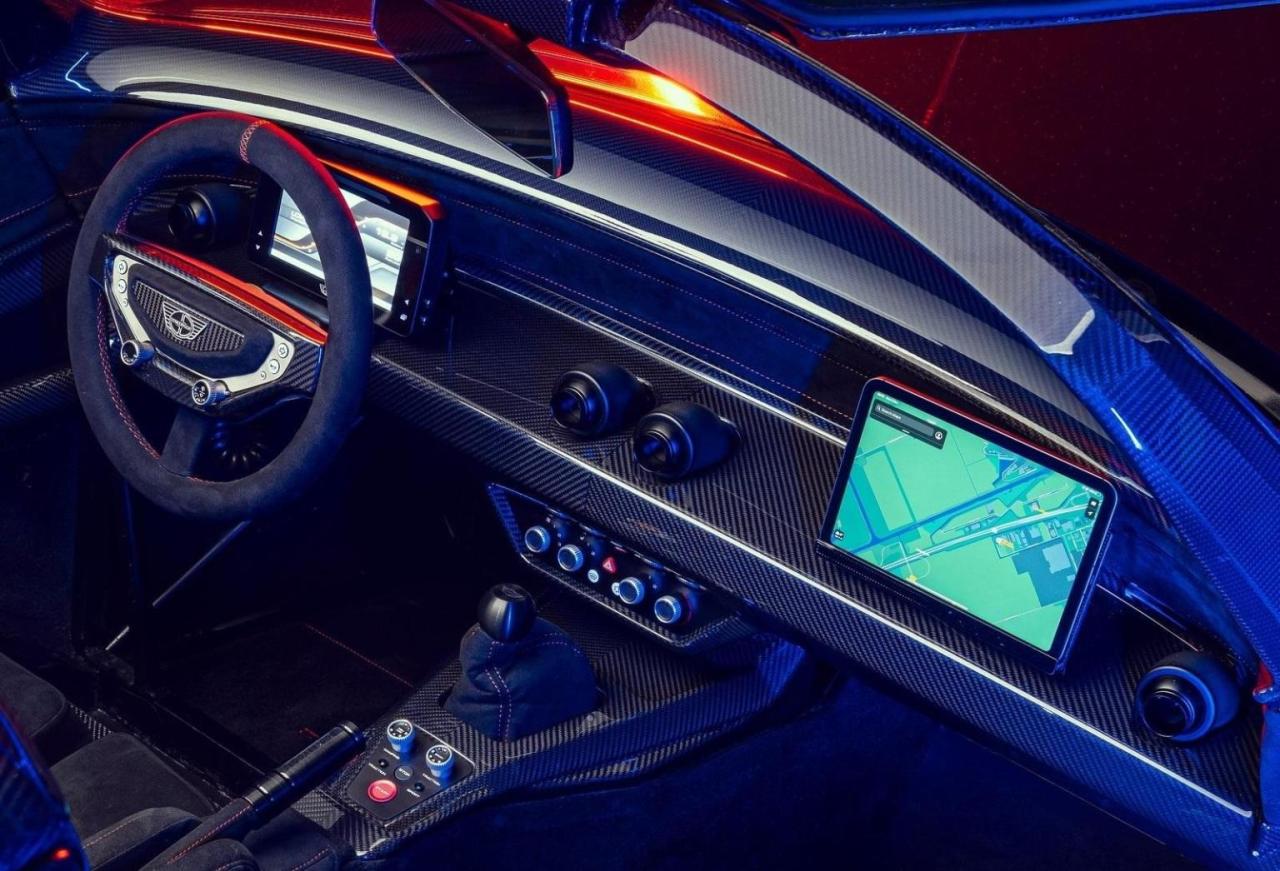
The F22 is the first new model since Denis Donkervoort took over as the company’s driving force after his father’s retirement, Donkervoort Automobielen founder Joop Donkervoort, early in 2021 and marks the end of the D8 GTO era.
An accomplished racer as well as Donkervoort’s Managing Director, Denis Donkervoort’s engineering brief called for even more track pace, greater comfort, ease of use at the limit and more practicality based on a safer, stronger car wrapped up in a revolutionary design.

The heart of the Donkervoort F22 powertrain is the front mid-engined five-cylinder turbocharged engine. It boasts 500 horsepower – in a machine weighing just 750kg.
The in-line engine was originally built by Audi Sport, and Donkervoort engineers have tuned it for even more power, torque and low-end drivability.
The potent engine was one of the key advantages in the weight-saving campaign, with Donkervoort avoiding hybrid and electric powertrains and the hundreds of kilograms they would have added.

The F22 development had an extreme obsession with weight reduction – even by Donkervoort standards – as the car grew physically larger to accommodate owner requests and legislation from three continents.
The five-cylinder engine’s bore and stroke are unchanged, and it runs a 10.0:1 compression ratio to deliver a mountain of torque from very low in the rev range.
Donkervoort also proved that the 2.5-litre engine still had more efficiency, even with a boost in power. The F22 has a homologated WLTP combined emissions figure of 163 grams of CO2 per kilometre – 28 fewer than its 695kg predecessor.
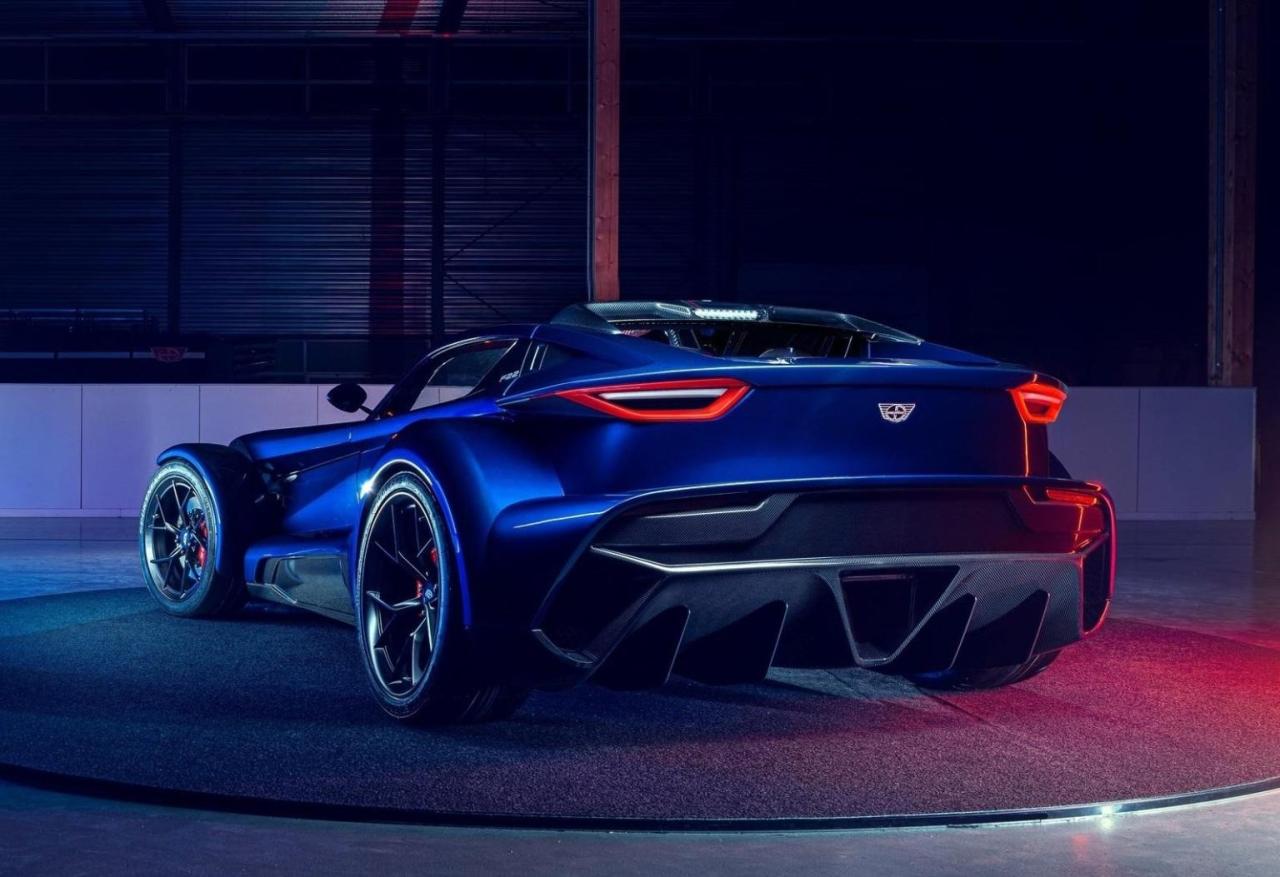
The enormous torque from low revs, combined with the car’s ultra-lightweight, means the F22 can utilise the size and weight efficiencies of the five-speed gearbox.
Besides saving at least 12kg over a six- or seven-speed gearbox, the shorter five-speed unit means the F22 can carry the engine further rearward, in a front-mid engine position, to optimise its balance and handling.
The gearbox and engine mate to a taut Torsen limited-slip differential, encased in new housing that no longer requires an additional cooling system for concentrated track work. The new housing is stronger and helps minimise drive-line noise in the passenger compartment.
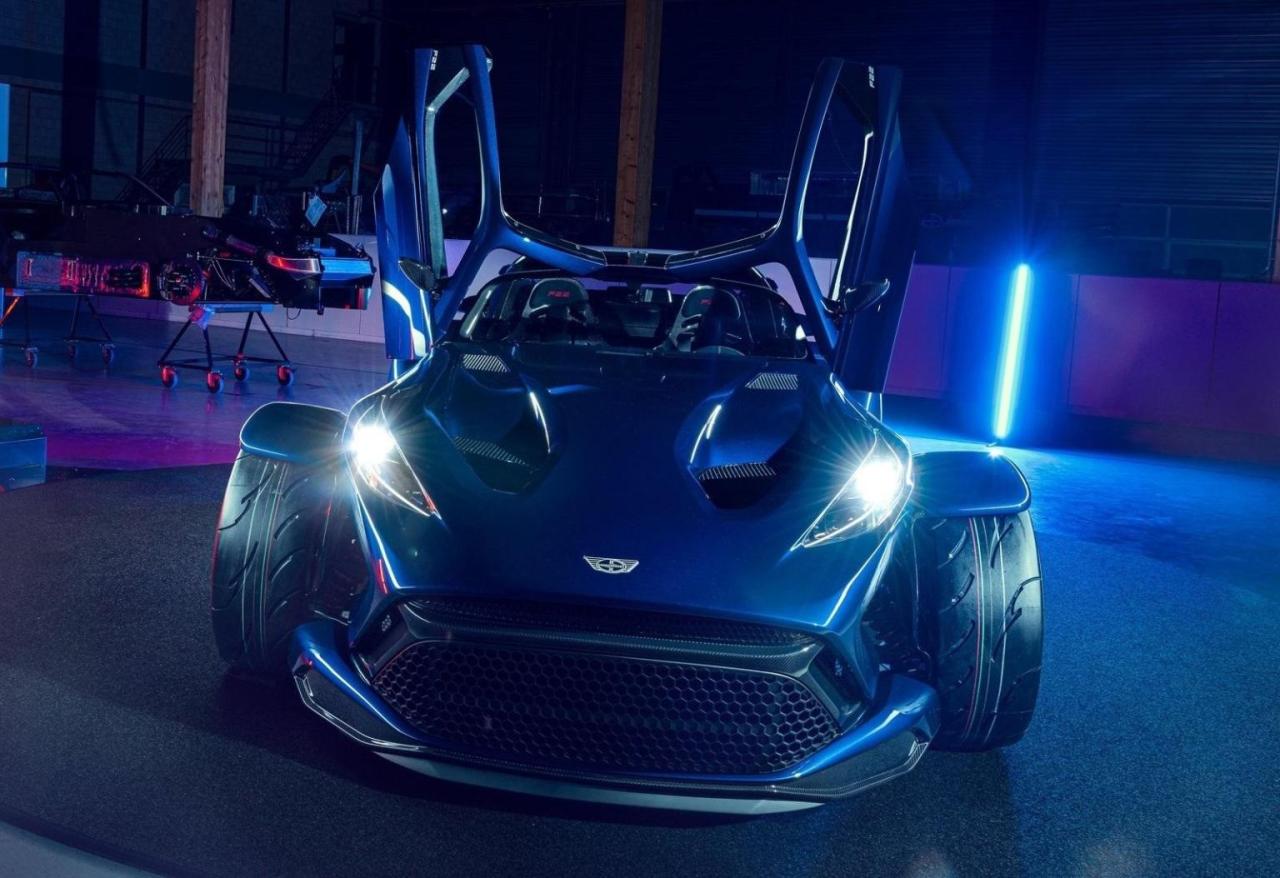
Determined to show their passion had only grown under new management, the Donkervoort engineering and design departments raised their game to new heights with the F22 program.
With 500 horsepower from its five-cylinder turbo motor, the rear-drive F22 delivers an astonishing power-to-weight ratio of 666hp per tonne.
Yet Donkervoort’s widespread use of innovative materials and a friction-eradication program helped the F22 to achieve a confirmed WLTP CO2 emissions figure of just 163 grams/kg – around 28 grams lower than its predecessor, despite gaining 55kg. With no speed limiter, the F22 is expected to reach a top speed of around 290km/h.
It retains the unrivalled driving intimacy of a pure mechanical driveline, with a rev-matched, five-speed manual gearbox driving the rear wheels through a new limited-slip Torsen differential.
And, in keeping with family tradition, the Donkervoort F22 is named for Denis Donkervoort’s first daughter, Filippa, who was born on May 22, 2022.
Still, the most driver-focused, rear-drive supercar money can buy, the Donkervoort F22s will be sold everywhere from North America to the Middle East and Europe, starting at €245,000 in European markets (including preparation costs, but excluding taxes and on-road costs).
The initial sold-out response to the first batch of F22s also prompted Donkervoort to open up its interest-registration program for both the F22’s successors as well as the remaining F22 allocations.
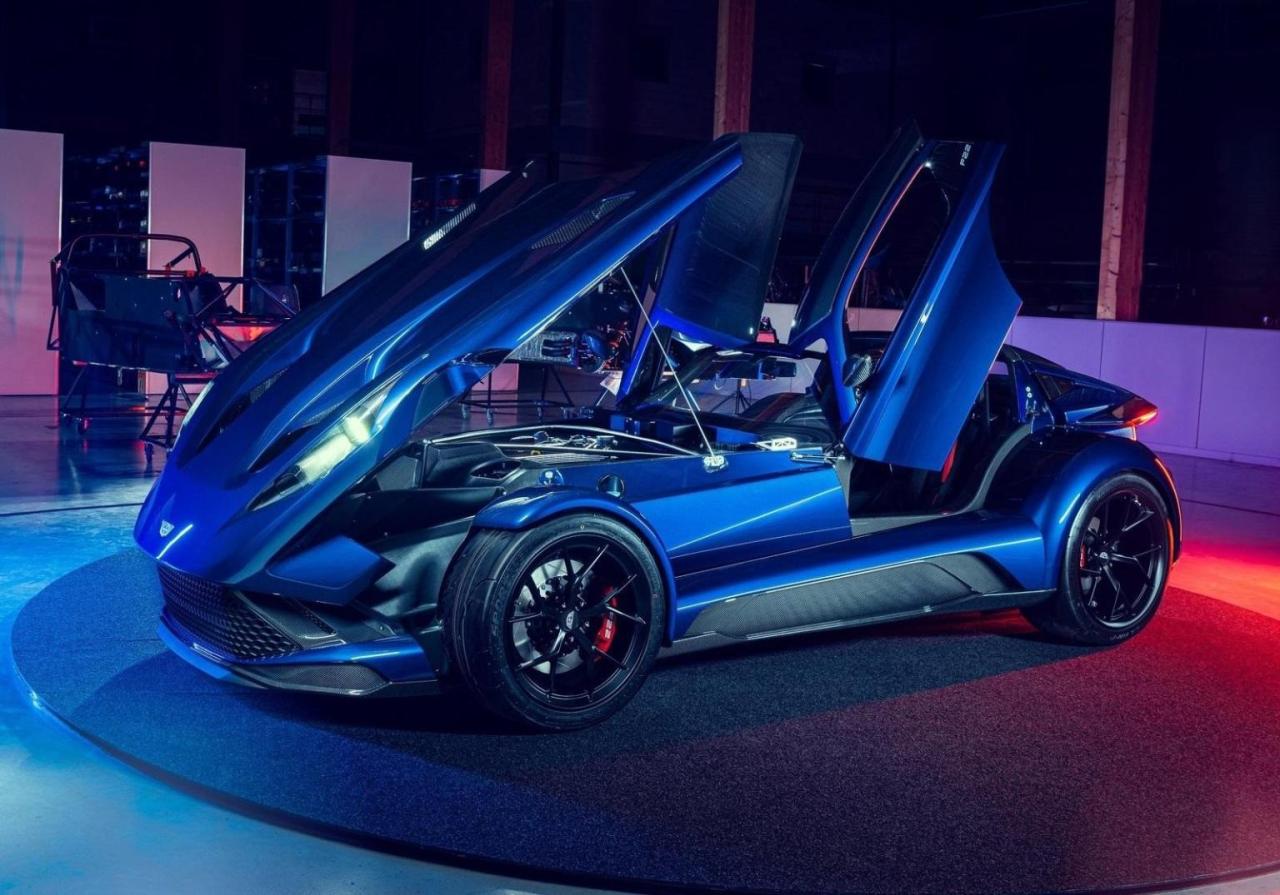
While the Donkervoort D8 GTO-JD70 was the first supercar to cross the 2G cornering threshold, the sophistication of the F22’s all-new chassis takes extreme grip even further to 2.15g.
The chassis is a hybrid of tubular steel and a generous serving of Donkervoort’s renowned carbon-fibre abilities, including the liberal use of the breakthrough Ex-Core carbon sandwich system.
But, critically, the F22 adds an entirely new dimension of day-to-day liveability and versatility when it is not driven to the outer limits of its abilities. This ultra-stiff core chassis delivers a quantum leap in handling and suspension accuracy while remaining ultra-light.
The result is a body-in-white with a 100-percent boost in torsional and bending rigidity over the outgoing D8 GTO Individual Series and commensurate increases in both active and passive safety. Donkervoort has built on this philosophy by deploying a new active shock absorber system to deliver at both the calmest and most frenzied extremes of a driver’s demands.
The Donkervoort F22 retains the multi-step traction-control system, which can be adjusted to suit the driver’s mood or road conditions. The new dampers include an adjustable hydraulic ride-height system, which can raise or lower the F22 by as much as 35mm.
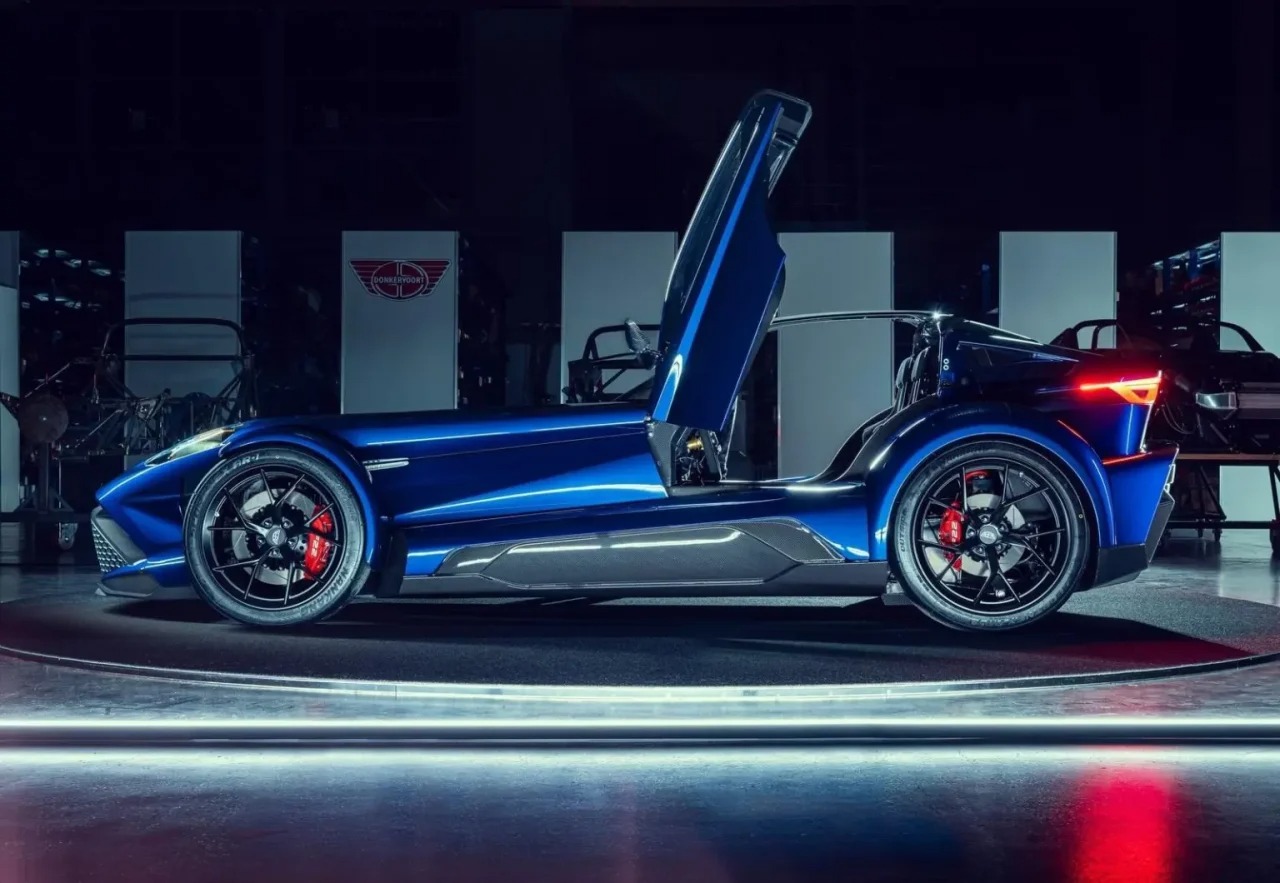
It also brings a new AP Racing braking system into play, with steel discs and a four-piston front caliper setup, saving 10kg over the already-featherweight system on the outgoing car.
Just as critically, the braking performance has improved by 30 percent over the outgoing D8 GTO Individual Series system. After using the Nankang AR-1 on its predecessor, Donkervoort built on the relationship with its official tyre supplier by developing custom AR-1 tyres for the ultra-lightweight F22 and going up an inch in tyre diameter.
The Donkervoort F22’s safety integrity has moved the game on for ultra-lightweight supercars, both its active and passive safety. With torsional rigidity rising from 20,000Nm/degree to 40,000 and bending stiffness doubling, the F22 provides a rock-solid platform for all the evasive moves a driver might need to take in an emergency.
The F22 also integrates the ultra-strong Ex-Core sandwich-construction, carbon-fibre segments with tube-steel sections in a hybrid chassis construction. The symmetrical design also uses the side-exiting exhaust pipe as a crash box for side-impact protection on the left side, adding strength to the Ex-Core side rails.
